A Beginner Guide to Gyaru (Gals)

Gyaru is the umbrella term which refers to the fashion subculture born in Japan in the mid 90’s and which has lasted for 2 decades, no less. The Gyaru subculture divides itself into many subcategories: Kogyaru, Hime-Gyaru, ganguro, Manba, Yamanba etc. But the basics and the spirit of Gyaru remained somewhat the same. I for one, find it hilarious in a non-despective way, they are genuinely funny and adorable and in some cases pretty hot!. 🙂
Nowadays the fashion is very much dead, that is hardly debatable, but pretty Gyarus can still be seen and I for one still find it pretty cool.
I will also talk a little bit about the Gal sub-genre in JAV. And if even I do mix them in this article, I must remark that Gyaru doesn’t equal JAV or is in any way part of the AV world. JAV merely conveniently uses the GAL style as a resource or parody and they are not really directly related to the Gyaru fashion. I say this because I don’t want any Gal lover to takes offense. 🙂

Imagine finding this in Shibuya, it would make my day.
1. So what is Gyaru?
Is the Japanese word for Gal, is a Fashion style and social sub-culture of girls who follow a certain style of clothes, hair, makeup, and activities. This style that began as a way to rebel against Japanese beauty standards. Gyaru, as we know it today, has drastic differences to what it was in its humble beginnings.
In the mid-1990s the Japanese style of Gyaru was born. The style began as a way to reject the Japanese beauty standards: Featuring pale skin, dark hair and natural makeup.
The early look consisted of tanned skin, bleached hair and white makeup around the eyes. The original style was also often times called Kogal.
A main part of the Gyaru style originated in the rebellious attitude. These girls were not at all afraid of being different, being loud, and sticking out from the norm. From the start, Gyaru were seen as promiscuous and dirty, which is a stereotype that has carried on throughout the years.
A main part of the Gyaru style originated in the rebellious attitude. These girls were not at all afraid of being different, being loud, and sticking out from the norm. From the start, Ggyaru were seen as promiscuous and dirty, which is a stereotype that has carried on throughout the years.
2. What is Kogal?
The word Kogal comes from the Japanese phrase “Kokosei Gyaru”, meaning high school gal. Most Kogals were in high school and easily recognized by their loose socks and shortened skirts.
Outside of school, you would often times see kogals wearing short skirts and tall chunky platform boots, which was a look popularized by the Japanese pop star, Namie Amuro.
Kogals would also often times wear tropically inspired outfits featuring patterns with hibiscus and fruits.
Many components of this early look carried on throughout the years and continued to be popular even today, such as tanned skin, bleached hair, and long nails.
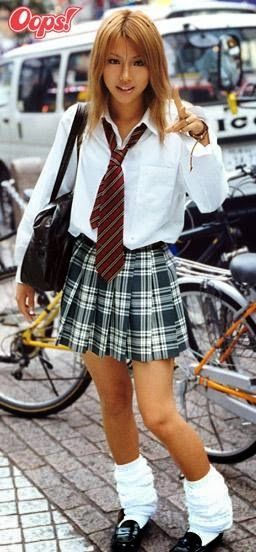

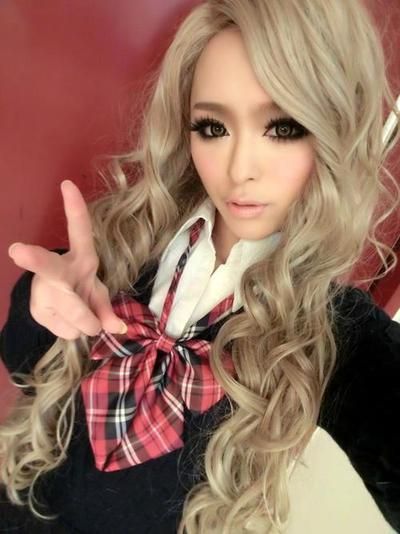
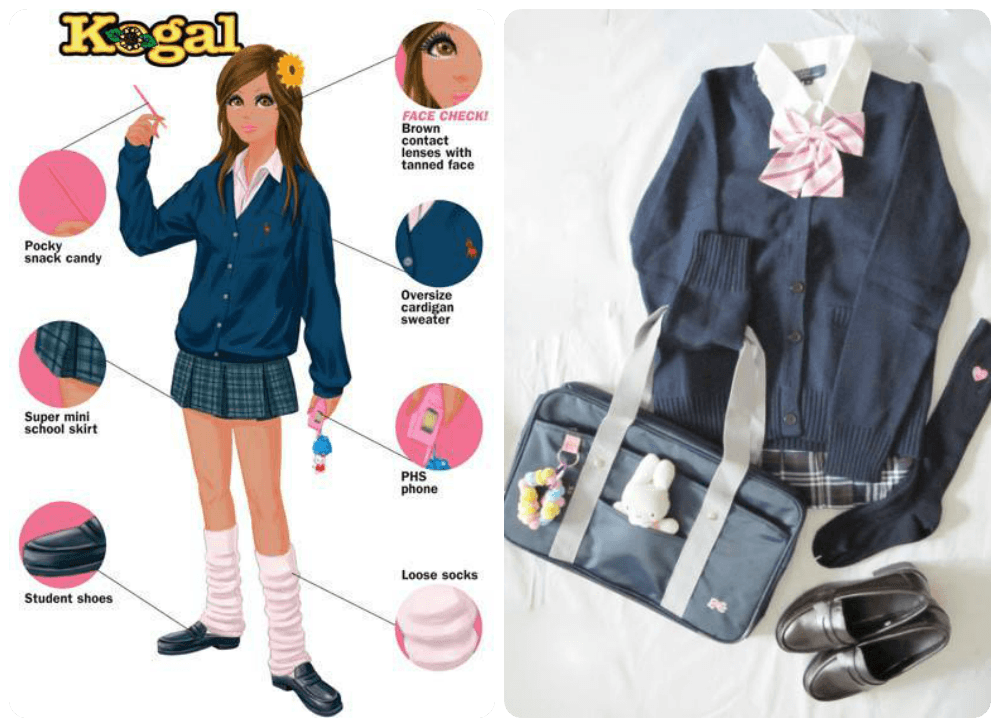
Admittedly Kogal is a toned-down gal style and perhaps one of my favorites too, for the awesome possibilities it brings forward. Because, yes, It can be very sexy too… 😛
3. Gyaru Slangs
Something very funny is that Gyaru’s developed their own slang, which like the fashion style also evolved over time. This is some of the Gal slangs that I heard over time:
AGEPOYO あげぽよ
Agepoyo is the equivalent of WTF or OMG. It could be the equivalent to “I’m so hyper right now omg! Agepoyo!” The opposite is Sagepoyo, often used jokingly. (Sage meaning “to lower”).
Examples of some Gyaru lingo beyond Agepoyo:
- ぽよ (Poyo) – a suffix that sounds cute (Example: 「ぽよぽよ」= Poyopoyo)
- あげぽよ (Agepoyo) – most popular slang word, means to be super excited, (ex.「あっ!コメンットがある!あげぽよ〜!」= Ahh! I got a comment! Yay~!)
- さげぽよ (Sagepoyo) – from さげ (sage), sad, disappointed
- しょげぽよ (Shogepoyo) – opposite of Agepoyo, bored, not excited
- らぶぽよ (Rabupoyo) – from ラブ (Rabu), feeling in love
- やばぽよ (Yabapoyo) – from やばい (Yabai), bad, dangerous,
- ひまぽよ (Himapoyo) – from 暇 (Hima), nothing to do
Other Gal slangs:
- かみってる (Kamitteru) – God-like (ex.「あのメイクアップはかみってる〜」= That makeup is god like~)
- とりま (Torima) – Anyway
- ぱちこく (Pachikoku) – Tell a lie
- ぱギャル (Pagal) – Not fully Gyaru
- うけぴい (Ukepii) – Funny
- 烏龍茶 (Oolong cha) – Annoying, long hair, brown colored hair
- あとんす (Atonsu) – Thank you
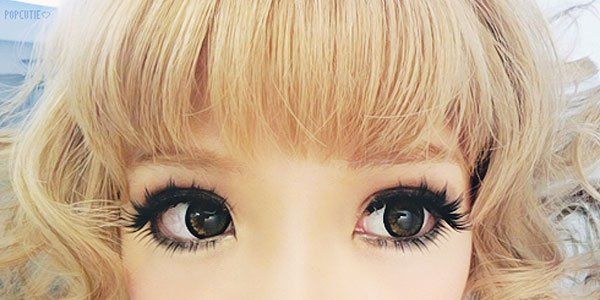
4. Gyaru circles and groups
One notable feature of Gyaru culture is their Gyaru groups and circles. A Gyaru circle can be a very complex system, but to give you a brief explanation, it is merely a group of Gyaru who will host events and meet up regularly.
There are two types of Gyaru circles:
-
- Nago-Sa, which are circles that only meet up to hang out very casually, and,
- Ive-sa, which are circles that meet up to plan and host events.
One active Gal circle I know is Black diamond, their facebook page can be found here.
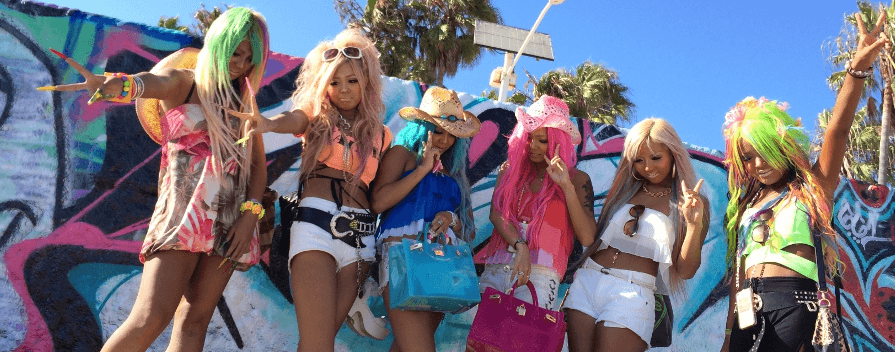
5. Parapara
Parapara is a style of synchronized dance that was accompanied by Eurobeat music. Para-para was a huge part of Gyaru culture for a number of years.
It was also the main past-time of many Kogals as well as other gals throughout the years.
In recent year it has become out of fashion big time, but some still do it, and I’m sure many still enjoy it. Especially the Eurobeat part of it, which keeps on rebounding. Initial-D much?.
It’s a whole other complex universe that I don’t dare to touch in this article. And while largely outdated too, it can be enjoyable.
Avex Trax website can be found here. If anyone cares.
6. Is there male Gyaru too?
Yes, the male counterpart of Gyaru would be “Gyaru-o”. The substyles of Gyaru-o could range just as much as with Gyaru.
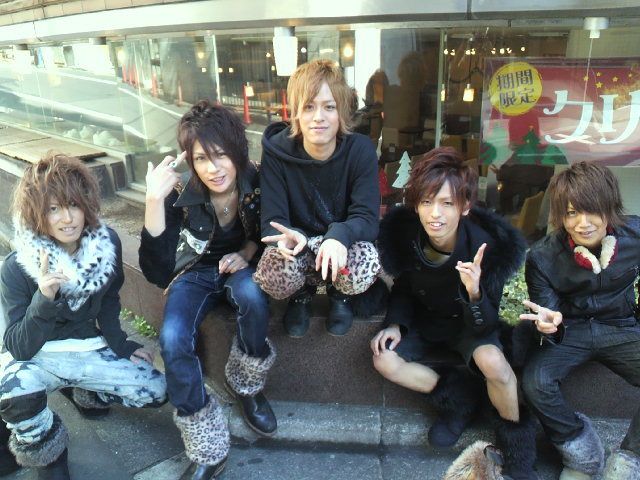
7. Where can Gyaru be found nowadays?
Shibuya. It is (or was) the main place where you are likely to see Gyaru. Also in that district, Shibuya 109 can be found, which is a shopping mall that became the mecca for Gyaru brands.

8. What is Ganguro?
Ganguro is the Gyaru substyle that gradually replaced Kogal in fashion during the 90s. Ganguro is characterized by a much deeper tan as well as white makeup on the lips and eyes. The hair was, of course, bleached, and from time to time, you would see silver hair.
This is also the time when eyelashes were added to the Gyaru look. Ganguro’s existence is often credited to the gal, Buriteri. She was often times featured in the Gyaru magazine,
egg.
Egg magazine was first published in 1995 and has since ceased publication. It was one of the most popular Gyaru magazines in circulation.
In 1999 egg was said to be selling 500,000 copies of its magazine with many tips on hot-to become a Shibuya Gyaru. They were selling so good that they even did a spin-off for male readers, men’s egg, which was founded in 1999 at the height of the egg. Nowadays closed too.
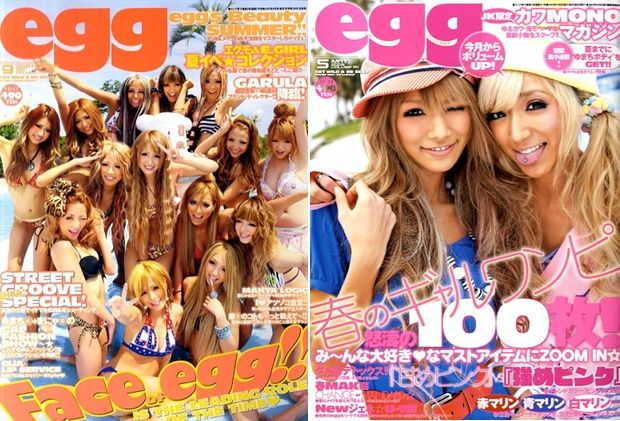
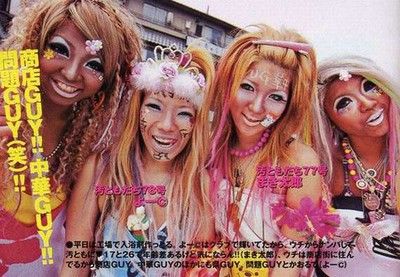
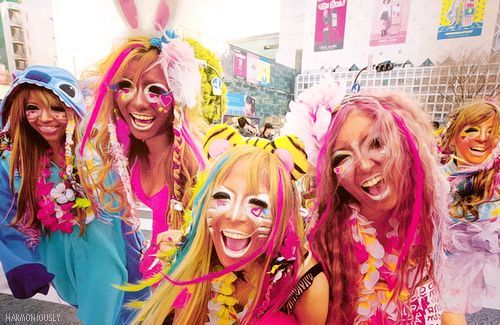
Ganguro is when things went from weird to super-weird. And we couldn’t be happier.
9. What is Manba Gyaru?
Manba was the next style that came into existence. Manbas were heavily tanned and wore white makeup on their eyes, lips, and cheeks. Often times, stickers were added on the cheeks.
Some of these gals wore circle lenses, but it was not a necessity. Manba’s hair was always super colorful.
Of course, not all of this Gyaru had colored hairstyles, but many did or would keep it bleached.
Manbas has a massive love for all things tropical and beachy. Hibiscus prints became incredibly popular, which is likely why the brand Alba Rosa had such huge success.
Alba Rosa is the most beloved brand of Manbas. By this time, the chunky boots that kogals and Ganguros wore were long gone.
A popular Manba of the time was the gal, Ka-tan. She was often times on the pages of egg magazine. She sported all the popular trends of the time, including a short-lived style called Romanba as well as Kigurimin.
Romanba was an attempt at mixing the more romantic and sweet style with the rough look of Manba. Kigurimin was a Manba style of wearing oversized animal character PJs called Kigurimi.
Needless to say, these micro styles quickly died out too.

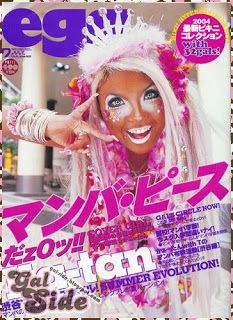
Above: The famous Ka-tan, in Romamba style. Because plain deranged was simply not enough. And not meaning any offense, but that was a little bit over the top. 🙂
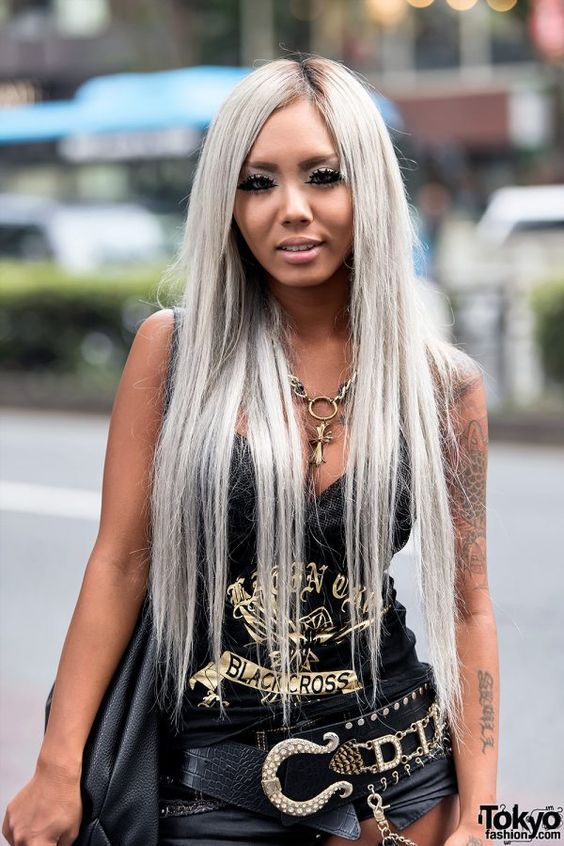
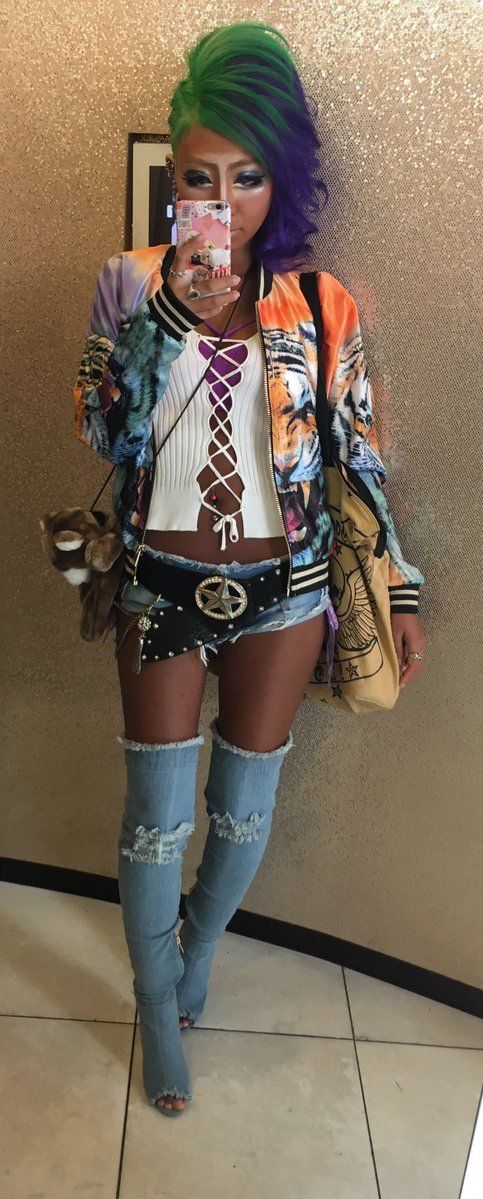
10. What is Kuro Gyaru
Kuro Gyaru is yet another a sub-style of Gyaru. Kuro Gyaru literally means ‘Black-skinned girls’ a name which originates from the dark tans worn by Kuro Gyaru.
This style gradually evolved from the original Ganguro style and is considered one of the more prominent modern Gyaru styles.
Black Diamond, a highly popular Gyaru Circle, is mostly made up of members who follow this Kuro Gyaru style and even some members who wear Yamanba and Manba styles associate themselves with Kuro Gyaru.
10. Last boom, the golden era of Gal
From around 2008 to 2011, Gyaru became a very popular fashion. The makeup became more refined and in many cases, borderline dolly. The clothes were often times very feminine or with a slight boyish touch.
Styles like Amekaji and Himekaji were seen everywhere. Often times, people will refer to this as the golden era of gal.
Gal was super popular and during this time, Gyaru clothing stores and Gyaru magazines flourished. Magazines that were previously not Gyaru at all suddenly had the most popular
gals on every cover.
For example, Popteen, which is not regularly a Gyaru magazine was suddenly releasing Gyaru themed magazines, and even created a short-lived sister magazine, PopSister.
Tsubasa Masuwaka was easily the most popular gal from this time. Her success continued as she launched her own makeup and eyelashes brand, Candy Doll and Dolly Wink,
respectively.
Gyaru of this time had a very easy going and laid back look, save for a few of the more strict styles. At this time, Gal was so easily accessible to the public, that many participated in the style.
11. When did Gal fashion start to decline?
Between 2012 and 2013, the style began to tone down significantly. Gals slowly stopped tanning, and the makeup became lighter and lighter.
The popularity steeply dropped and this caused many of the popular GGyaru magazines (including egg magazine) to cease publication. There is a lot of speculation as to why the style toned down, but to be completely honest, the style did not tone down, the magazines did.
The magazines that did this, in a way, shaped the industry. The Gyaru brands toned down
and in many cases, ended up dying or losing its popularity. Brands that have stayed true
to their aesthetic, such as MA*RS and D.I.A. are still going strong.
With so many of the brands toning down, new brands pop up and see this as an opportunity to try to re-brand the gal fashion. Brands like FIG & VIPER have tried to call their style of clothing “Neogal” however the style couldn’t be further from the gal aesthetic.
The only thing that Neogal and Gyaru have in common is the word gal. In reality, Neogal is basically grunge clothing with low maintenance hair and makeup.
By the way, Alisa Ueno, the creator of the style and the brand FIG&VIPER has come out and said that Neogal is not at all related to Gyaru style. Not that I am a nit-pick or anything, but this is also something that I knew for a long time. Neo-Gal is not a gal-fashion at all.
Another possibility to why Gyaru fashion is not as popular anymore is because this Fashion is a bit too over the top, and some people look down upon Gyarus.
Styles like Kuro pushed the limits with extreme Deco nails, over the top hair, and of course, deep tans. However, this type of look is not accessible or long-term realistic for everyone.
If we compare this type of Gyaru to Gyaru from the late 2000’s, you’ll see a distinct difference.
Gyaru from the late 2000s was a very easy style to do, even without brands. To be a Gyaru now in 2018 is rather difficult and expensive.

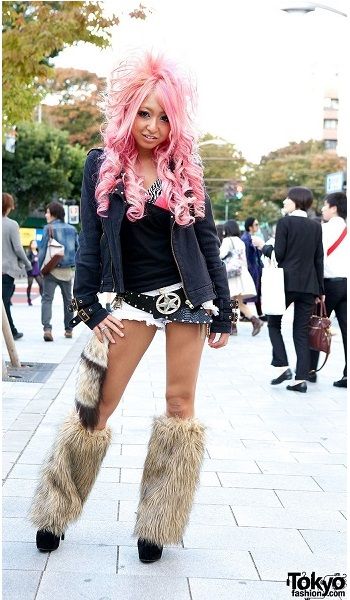
11. Girls in JAV that use the Gal fashion
Although it could be debated if these actresses are true Gals or not, most of them just use fashion to their advantage to act in the AV movies.
There are a few girls in JAV who have been known to use the Gal looks and clothing non-stop all along their career, an even outside the movies:
- MIRANO
- AIKA
- Hasegawa Natsuki
- MOKA (ERIKA)
1.MIRANO 2.AIKA
2.AIKA  3. Natsuki
3. Natsuki  4. MOKA
4. MOKA 




For me, the 4 girls above are the JAV gals that at some point I enjoyed the most. Considering that the 4 girls above have kept this Gal looks during their careers.
Plenty of many other JAV actresses have used the gal fashion temporarily. Okazaki Emiri comes to mind, Matsumoto Mei, Mizutani Kokone, even Ootsuki Hibiki, among many others.
Other notable AV actresses that did use the GAL fashion include:
- Maruyama Reona
- NOA
- Uehara Karen
- Fujimoto Shion
Etc.
There are gal Adult videos as early as 2000’s, but much like the Gyaru fashion, there was a boom in gal JAV movies around 2000’s, especially after 2009 and started to fade out in 2013 or so.
Nowadays gal videos are toned down by much. Very heavy sun-tans are gone and everything has been watered down, but new releases with gal themes keep on launching and they are still popular despite everything, and that’s a good thing.
The full list of Gal videos at R18 can be found here. There are over 10000 videos.
12. Gyaru in 2018?
In 2018 the Gyaru fad is mostly gone, that’s true. So much, that it dropped from a popularity peak to almost Zero in a really quick time.
Some reasons for this steep decline include:
- Korean dramas arrived in force and other fashion styles with it.
- Para para was already quite outdated, and KPOP did beat JPOP big time.
- Gyaru fashion is hard to maintain in the medium-term, plus expensive.
- Internet.
However, Gyaru who truly love the style will always continue to wear the styles regardless of how popular it is, if at all. Some Gyaru can still be spotted in Tokyo, and this fashion started as a small subculture and it will simply go back to being just that, a small contra-cultural fashion style.
Gyaru is a style that will continue to change and reshape itself, so only time will tell
what the style will turn into next.

Usa Miharu before becoming an AV actress was a gyaru and was the leader of an idol’s group, the GAL♥DOLL with the name of Ryoka Nishinaga.
Woah. awesome, Thanks.
I knew she debuted in MUTEKI for something on the sorts like this, but I didn’t knew exactly what. Usa the Gyaru looked awesome.
You know that Usa-chan is one of my favorites and when someone particularly interests me I try to know as much as possible.
Thanks for writing this up; was a really interesting read.
Thank you so much for this article, very interesting.
pls make profile info for moka (erika), she’s my favorite
She is a godess, gladly she lives in Japan, if I ever met her I would probably get a heart attack, realising we do breathe the same air, and die happily.
I think Gyaru is making a comeback 2020s onwards from the anime and fashion styling today
GYARU COMEBACK 2023!!!!!!!!!!
Have a Gyarumeru day~